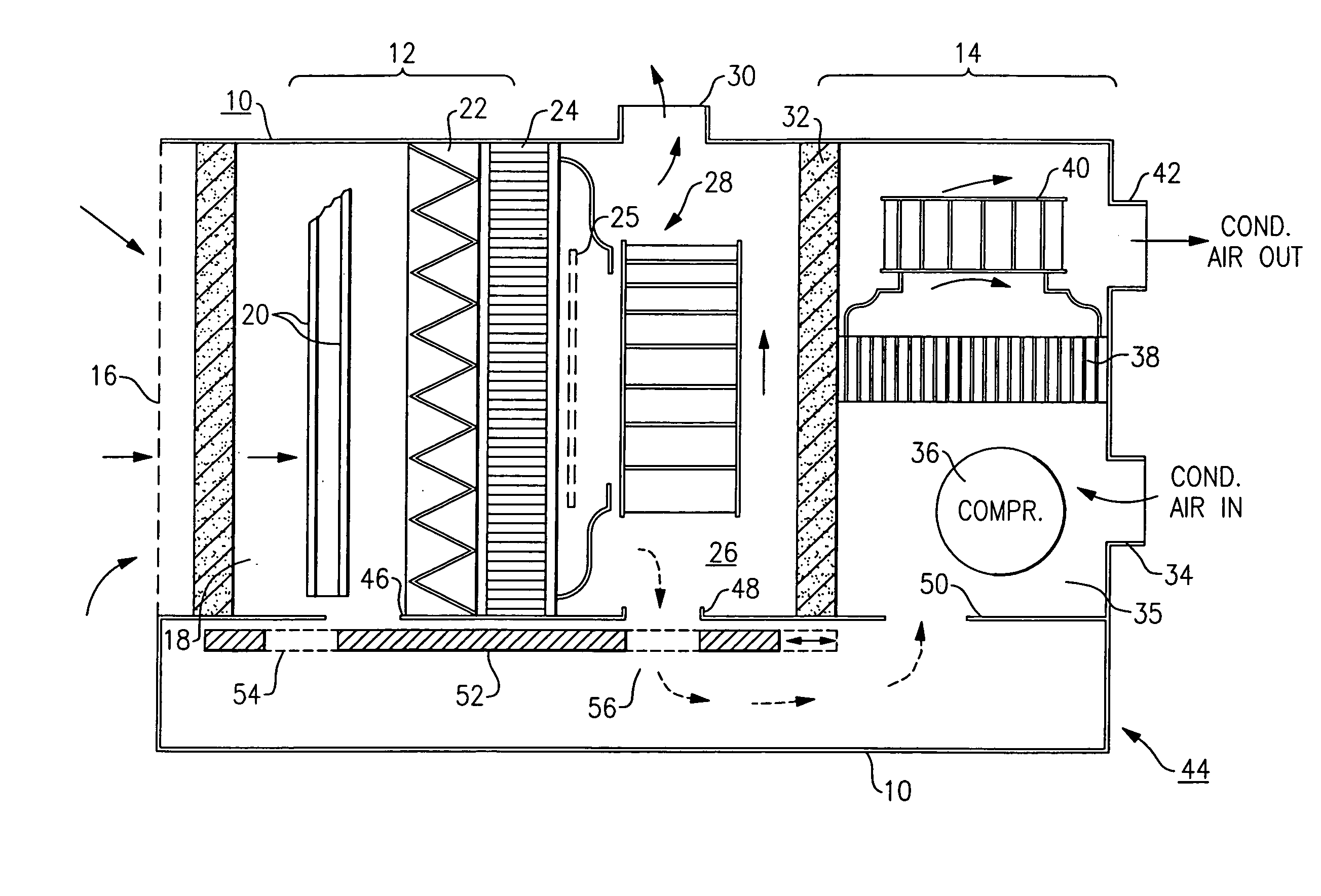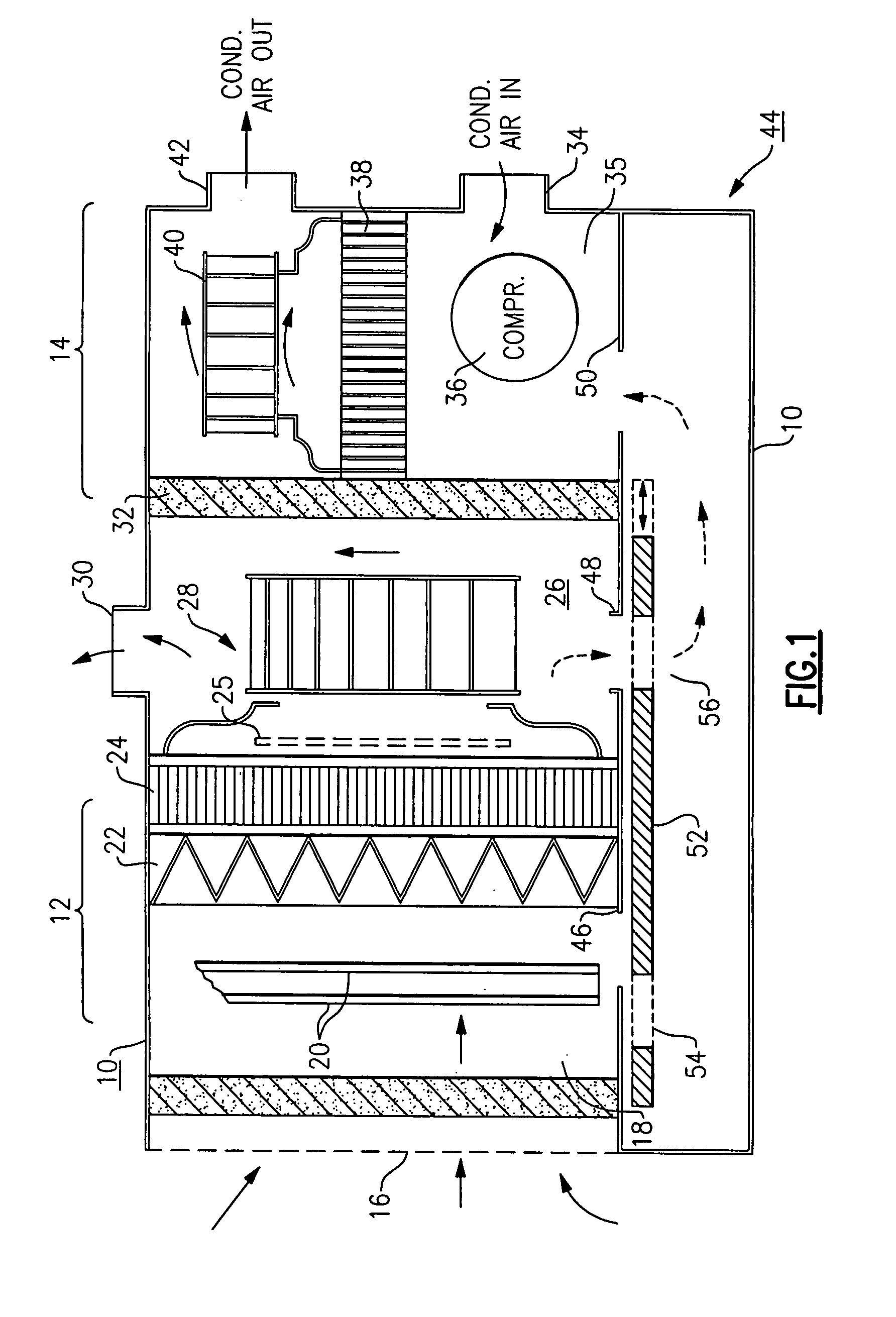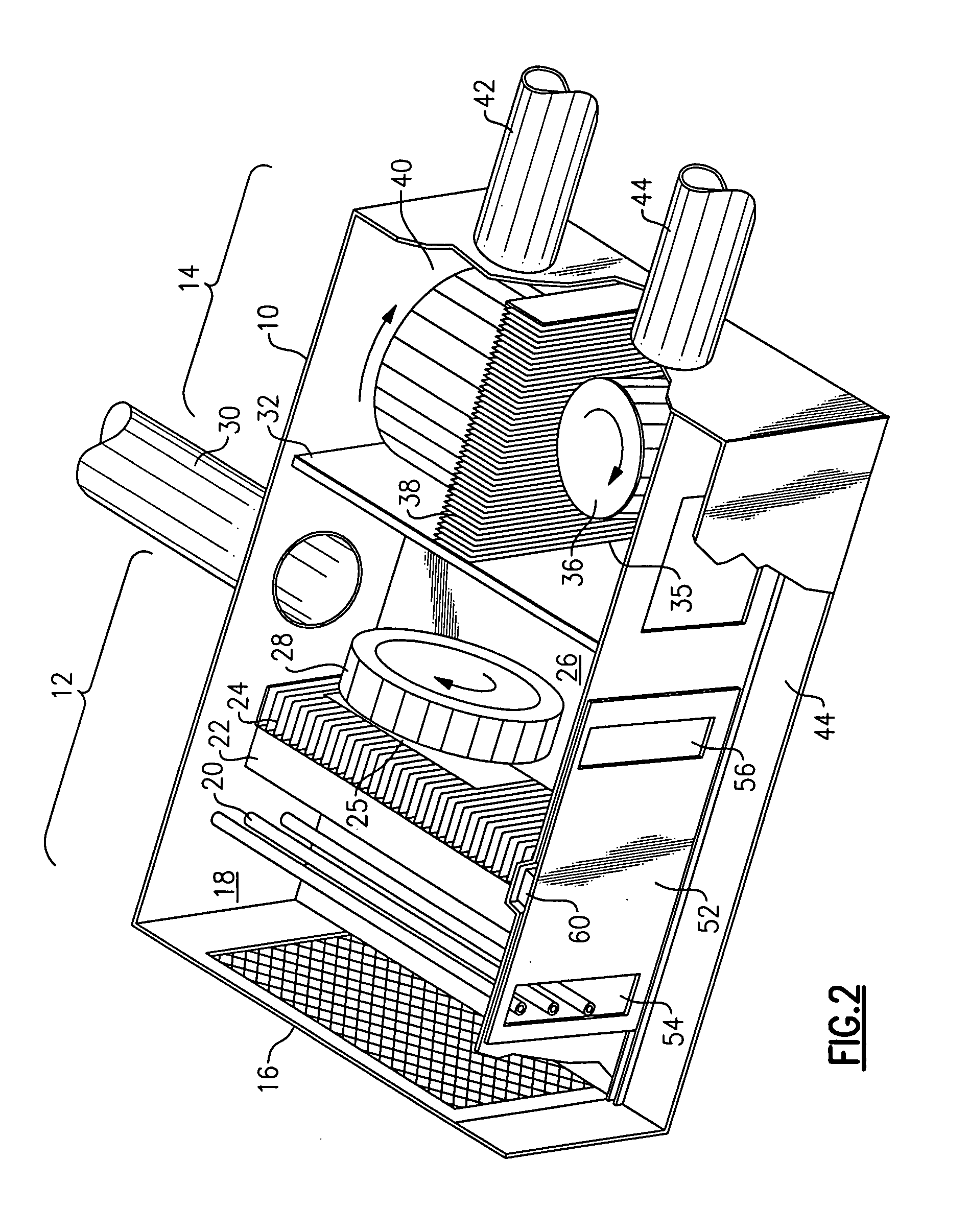Environmental control unit for hospital room
a technology for controlling units and hospital rooms, applied in the field of room air conditioning and filtration equipment, can solve the problems of difficult conversion of positive pressure rooms, limiting the flexibility of a hospital to deal with emergency situations, and high construction costs of isolation rooms, and achieve the effect of convenient installation
- Summary
- Abstract
- Description
- Claims
- Application Information
AI Technical Summary
Benefits of technology
Problems solved by technology
Method used
Image
Examples
Embodiment Construction
[0027]With reference to the drawing Figures, FIGS. 1 and 2 show the general construction of the hospital environmental control unit of one possible embodiment, with a housing or enclosure 10, and an indoor or evaporator side 12 and an outside air or condenser side 14. The indoor evaporator side 12 has an intake grille 16, which serves as inlet for return air from the conditioned room environment, and the grille may incorporate a pre-filter. This leads to a return plenum 18 in which there are UV tubes 20 that provide sterilizing ultraviolet radiation for killing airborne pathogens. After this the return air passes through a HEPA filter 22 and then through an evaporator coil 24 that chills and dehumidifies the air. An electric heat coil 25 may be present for reheating the air, as necessary to control room temperature. The UV tubes 20 also illuminate the HEPA filter 22 to kill any bacteria or other pathogens that become trapped on the filter. After this, a supply plenum 26 includes a f...
PUM
 Login to View More
Login to View More Abstract
Description
Claims
Application Information
 Login to View More
Login to View More - R&D
- Intellectual Property
- Life Sciences
- Materials
- Tech Scout
- Unparalleled Data Quality
- Higher Quality Content
- 60% Fewer Hallucinations
Browse by: Latest US Patents, China's latest patents, Technical Efficacy Thesaurus, Application Domain, Technology Topic, Popular Technical Reports.
© 2025 PatSnap. All rights reserved.Legal|Privacy policy|Modern Slavery Act Transparency Statement|Sitemap|About US| Contact US: help@patsnap.com



